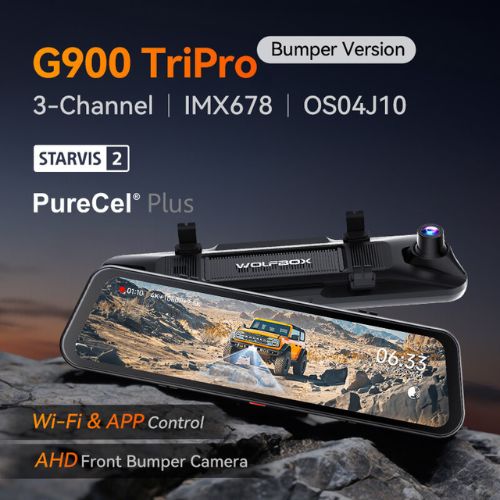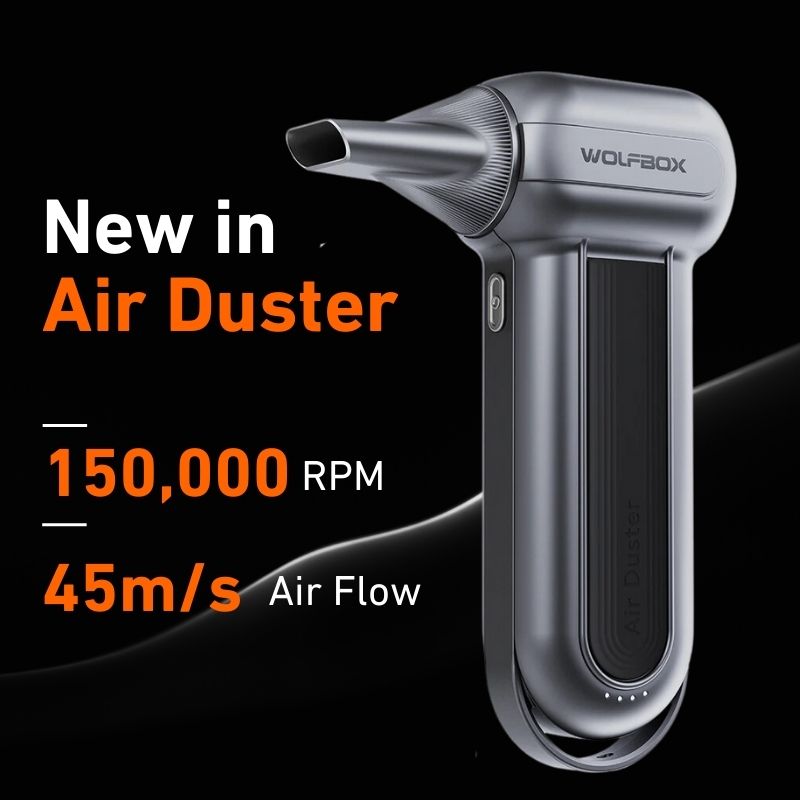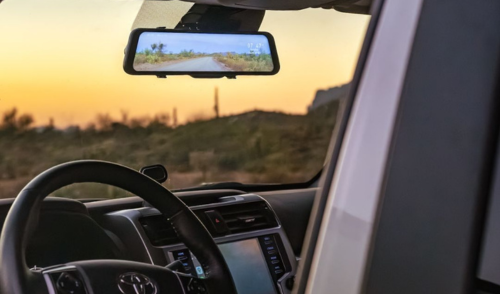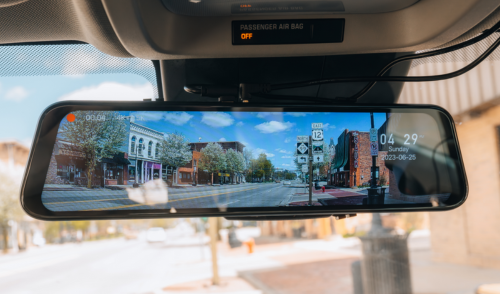Inside this Article:
- Types of Car Reverse Cameras
- Factors to Consider When Choosing a Car Reverse Camera
- Image Quality
- Field of View
- Night Vision
- Parking Guidelines
- Waterproof and Weatherproof Rating
- Compatibility with Your Vehicle
- Installation and Setup
- Professional Installation vs. DIY
- Wiring and Mounting Considerations
- Pairing with a Display or Monitor
- Tips for Using a Car Reverse Camera
- Frequently Asked Questions
- 1. What is the recommended field of view for a car reverse camera?
- 2. Can I install a car reverse camera myself, or should I hire a professional?
- 3. How do I ensure my car reverse camera is compatible with my vehicle?
- 4. How do I maintain and care for my car reverse camera?
- Conclusion
As the world becomes increasingly connected and technology-driven, the importance of safety features in our vehicles has never been more paramount. One such essential feature is the car reverse camera, which has become a must-have for many drivers. Whether you're navigating tight spaces, parallel parking, or simply wanting to enhance your overall driving experience, a reliable and high-quality car reverse camera can make all the difference.
In this comprehensive blog post, we'll explore the world of car reverse cameras, delving into the various types, key features to consider, and the top brands and models on the market. By the end of this guide, you'll be equipped with the knowledge to make an informed decision and choose the best car reverse camera for your vehicle.
Types of Car Reverse Cameras
When it comes to car reverse cameras, there are several different types to choose from, each with its own unique advantages and considerations.
Wired vs. Wireless
Wired car reverse cameras are typically more reliable and offer a consistent connection, as they are directly integrated into your vehicle's electrical system. On the other hand, wireless car reverse cameras provide greater flexibility and ease of installation, as they eliminate the need for complex wiring.
License Plate Mount vs. Rear-View Mirror Mount
License plate-mounted car reverse cameras are a popular choice, as they are discreetly integrated into the rear of your vehicle. Rear-view mirror-mounted cameras, on the other hand, offer a more centralized and convenient viewing experience, as the camera is integrated directly into the mirror.
Single vs. Multi-Camera Systems
Single-camera systems provide a basic, yet effective, reverse view, while multi-camera systems offer a more comprehensive and panoramic perspective, allowing you to see more of your surroundings.

Factors to Consider When Choosing a Car Reverse Camera
When selecting the perfect car reverse camera for your vehicle, there are several key factors to consider to ensure you make the best choice.
Image Quality
The image quality of your car reverse camera is paramount, as it directly impacts your ability to navigate and maneuver with confidence. Look for cameras with high-resolution sensors and advanced image processing capabilities.
Field of View
The field of view (FOV) of your car reverse camera determines how much of the area behind your vehicle is visible. A wider FOV can provide a more comprehensive view, making it easier to spot obstacles and navigate tight spaces.
Night Vision
If you frequently drive in low-light conditions or at night, a car reverse camera with advanced night vision capabilities can be a game-changer, ensuring you maintain clear visibility and safety.
Parking Guidelines
Many car reverse cameras come equipped with dynamic parking guidelines, which overlay virtual lines on the camera's display to help you gauge distance and position your vehicle accurately.
Waterproof and Weatherproof Rating
Considering the harsh environmental conditions your car reverse camera may face, it's essential to choose a model with a high waterproof and weatherproof rating to ensure reliable performance, even in the face of rain, snow, or extreme temperatures.
Compatibility with Your Vehicle
Ensure that the car reverse camera you select is compatible with your specific make, model, and year of vehicle, as this will simplify the installation process and ensure a seamless integration.

Installation and Setup
When it comes to installing and setting up your car reverse camera, you have two main options: professional installation or a do-it-yourself (DIY) approach.
Professional Installation vs. DIY
If you're not comfortable with the technical aspects of installation or prefer a hassle-free experience, opting for professional installation can be the way to go. Professional installers have the expertise and tools to ensure a seamless integration of your car reverse camera into your vehicle's electrical system.
On the other hand, a DIY installation can be a more cost-effective option and can be a rewarding experience for those who enjoy a hands-on approach. However, it's essential to carefully follow the manufacturer's instructions and take the necessary precautions to avoid any potential issues.
Wiring and Mounting Considerations
Regardless of whether you choose professional installation or a DIY approach, there are several important factors to consider when it comes to wiring and mounting your car reverse camera. Proper cable routing, secure mounting, and ensuring a weatherproof seal are all crucial elements to ensure the long-term performance and reliability of your camera.
Pairing with a Display or Monitor
Many car reverse cameras are designed to be paired with a dedicated display or monitor, which can be integrated into your vehicle's dashboard or center console. Ensuring a seamless connection and compatibility between your camera and display is essential for a smooth and user-friendly experience.
Tips for Using a Car Reverse Camera
Once your car reverse camera is installed and set up, there are several tips and best practices to keep in mind to ensure optimal performance and safety.
Adjusting Settings for Optimal Performance
Familiarize yourself with the various settings and customization options available on your car reverse camera, such as adjusting the brightness, contrast, and parking guidelines to suit your preferences and driving conditions.
Maintenance and Care
Regularly cleaning the camera lens and ensuring the mounting is secure can help maintain the camera's performance and extend its lifespan. Additionally, be mindful of any software updates or firmware upgrades recommended by the manufacturer.
Safety Precautions
While a car reverse camera is a valuable safety feature, it's important to remember that it should not replace your own visual awareness and attentiveness when reversing or maneuvering your vehicle. Always use the camera as a supplementary tool and remain vigilant of your surroundings.
Frequently Asked Questions
1. What is the recommended field of view for a car reverse camera?
The recommended field of view for a car reverse camera is typically between 130 and 170 degrees. This wide-angle coverage helps provide a comprehensive view of the area behind your vehicle, making it easier to spot obstacles and navigate tight spaces.
2. Can I install a car reverse camera myself, or should I hire a professional?
Both DIY installation and professional installation have their advantages. If you're comfortable with basic electrical work and have the necessary tools, a DIY installation can be a cost-effective option. However, if you're unsure or want a hassle-free experience, hiring a professional installer may be the better choice.
3. How do I ensure my car reverse camera is compatible with my vehicle?
To ensure compatibility, check the manufacturer's specifications and ensure the camera is designed to fit your specific make, model, and year of vehicle. You can also consult with the retailer or manufacturer to confirm compatibility before making a purchase.
4. How do I maintain and care for my car reverse camera?
Regularly cleaning the camera lens with a microfiber cloth, ensuring the mounting is secure, and keeping an eye out for any software updates or firmware upgrades recommended by the manufacturer can help maintain the performance and longevity of your car reverse camera.
Conclusion
Choosing the best car reverse camera for your vehicle is an important decision that can significantly enhance your driving experience and overall safety. By understanding the different types of car reverse cameras, considering the key factors, and familiarizing yourself with the top brands and models, you'll be well on your way to finding the perfect solution for your needs.
Remember, a car reverse camera is a valuable tool, but it should not replace your own vigilance and attentiveness when reversing or maneuvering your vehicle. By combining the capabilities of your car reverse camera with your own driving skills and awareness, you can enjoy a safer and more confident driving experience.
So, whether you're navigating tight parking spaces, backing up to a trailer, or simply wanting to add an extra layer of safety to your daily commute, a high-quality car reverse camera is an investment worth considering. Start your search today and take the first step towards a more secure and stress-free driving future.






Leave a comment
This site is protected by hCaptcha and the hCaptcha Privacy Policy and Terms of Service apply.